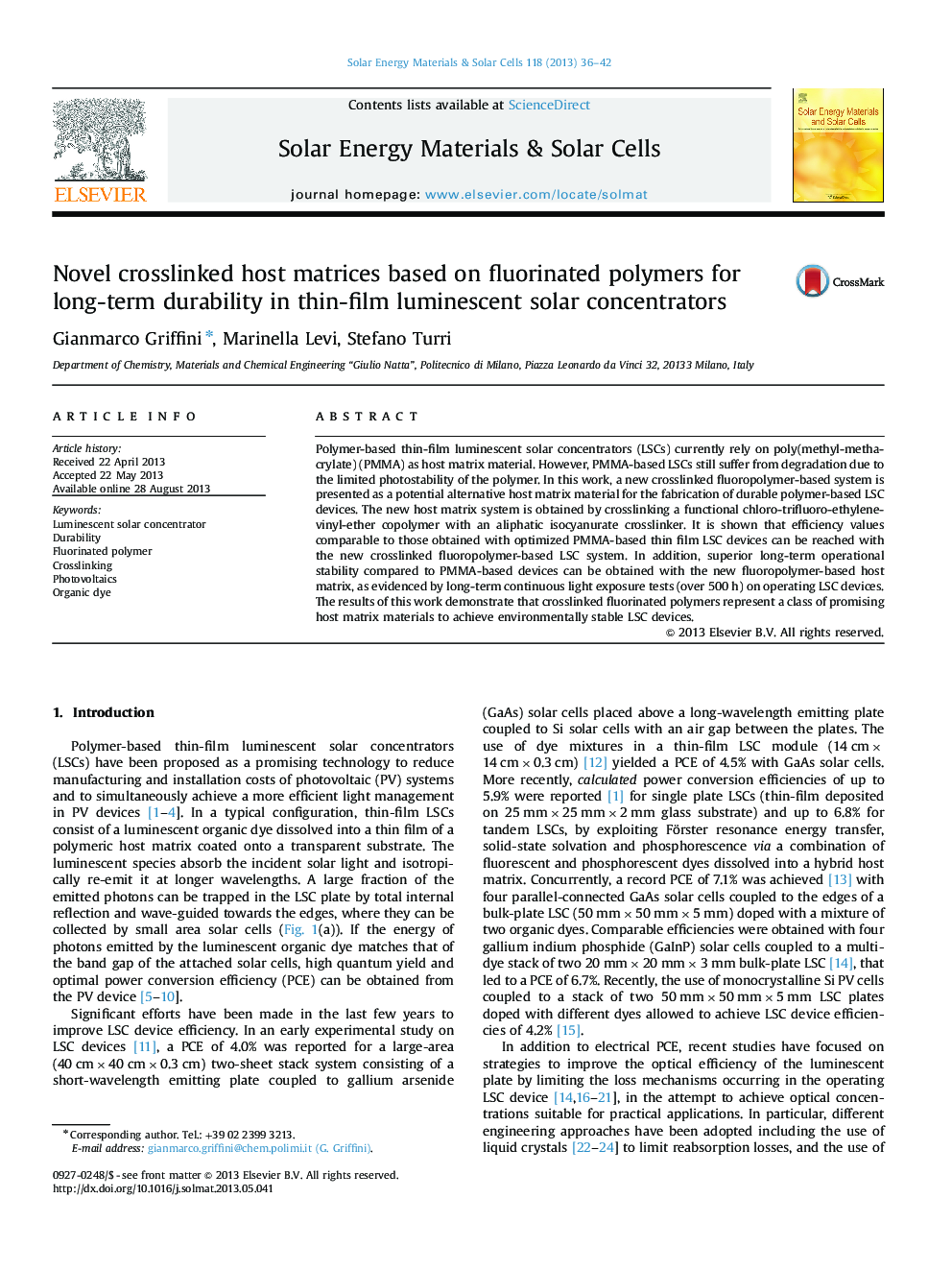| Article ID | Journal | Published Year | Pages | File Type |
|---|---|---|---|---|
| 78291 | Solar Energy Materials and Solar Cells | 2013 | 7 Pages |
•A new host matrix system for thin film luminescent solar concentrators is presented.•This system represents a potential alternative to standard matrices based on PMMA.•The new host matrix system is based on a crosslinked fluorinated polymer.•Efficiency values comparable to PMMA-based devices are obtained with the new system.•Superior long-term device stability is achieved compared to standard PMMA systems.
Polymer-based thin-film luminescent solar concentrators (LSCs) currently rely on poly(methyl-methacrylate) (PMMA) as host matrix material. However, PMMA-based LSCs still suffer from degradation due to the limited photostability of the polymer. In this work, a new crosslinked fluoropolymer-based system is presented as a potential alternative host matrix material for the fabrication of durable polymer-based LSC devices. The new host matrix system is obtained by crosslinking a functional chloro-trifluoro-ethylene-vinyl-ether copolymer with an aliphatic isocyanurate crosslinker. It is shown that efficiency values comparable to those obtained with optimized PMMA-based thin film LSC devices can be reached with the new crosslinked fluoropolymer-based LSC system. In addition, superior long-term operational stability compared to PMMA-based devices can be obtained with the new fluoropolymer-based host matrix, as evidenced by long-term continuous light exposure tests (over 500 h) on operating LSC devices. The results of this work demonstrate that crosslinked fluorinated polymers represent a class of promising host matrix materials to achieve environmentally stable LSC devices.
Graphical abstractFigure optionsDownload full-size imageDownload as PowerPoint slide
